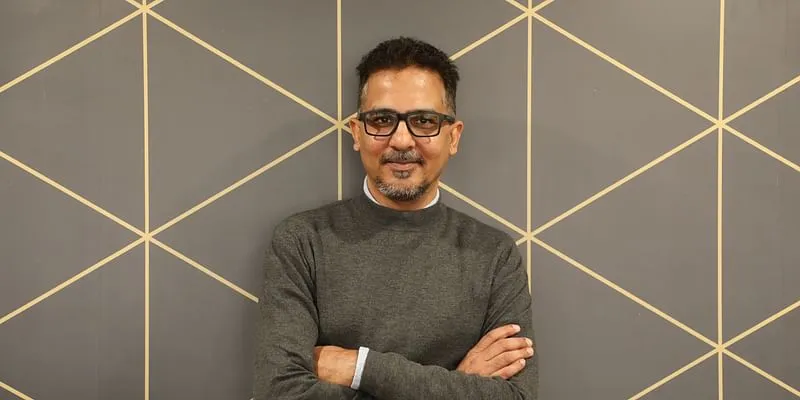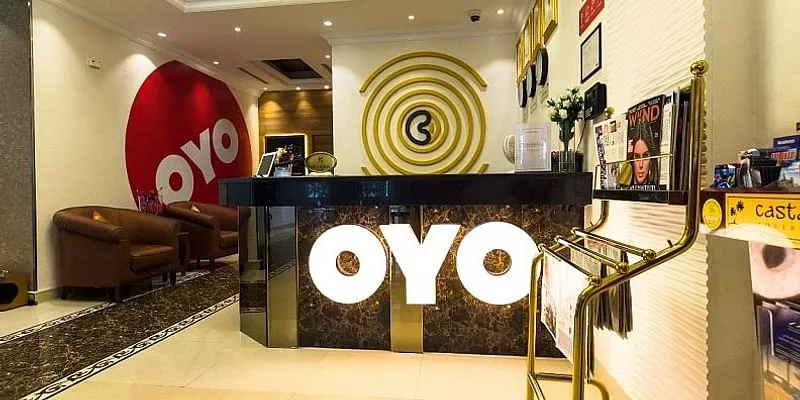Outlook 2021: This year will see the resurgence of OYO, says CEO Rohit Kapoor
Rohit Kapoor, CEO for India and South Asia at OYO Hotels & Homes, speaks about how OYO played host to the most uninvited check-in of the year, coronavirus, and why focusing on tech and the customer will make 2021 the year of a resurgent OYO.
A year before COVID-19, was India’s second most valuable internet startup and employed close to 25,000 people across the world.
However, the coronavirus pandemic, which battered the travel and hospitality business across the world, hit the Indian hospitality unicorn extremely hard. Amidst the layoffs, change in business model, and reshuffling of top management, the Ritesh Agarwal-led chain has had to struggle to survive.
The company’s underlying resilience and spirit has helped it stay the course in these trying times.
In an exclusive interview with YourStory, Rohit Kapoor, CEO for India and South Asia at OYO Hotels & Homes, spoke about all that transpired in 2020, how OYO was hospitable to the most uninvited check-in of the year - coronavirus, and how 2021 will be the year of a resurgent OYO.
Edited excerpts from the interview:
YourStory (YS): Can you walk us through what OYO went through during the initial days of the pandemic?
Rohit Kapoor (RK): I distinctly remember it was March 22 or 21…the lockdown had not been announced, but we were seeing signs with what was happening in China and other countries. I did not realise that it would be the last meeting in office, and we discussed possibilities of a lockdown. Somebody opened up an Excel sheet and we listed all the focus areas we needed to double down on. For instance, the physical contact centres might shut down, so what was the Business Continuity Plan (BCP) there?
At that time, we did not know what would happen, but we considered all probabilities. Interestingly, while there was a lot of concern as hotels were not allowed to operate initially and revenues fell, there was no panic in the company.
YS: What plan did you chalk out and work on from March onwards?
RK: We had zeroed in on four to five key things. These included cash and cost conservation, a plan for remote operations, and incentives, rebates, and waivers for our smaller partners who were badly hit.
We also figured out all ways to support partners in terms of demand. For example, working with hospitals. I come from a healthcare background, and was on the board of Max Healthcare before OYO. I quickly realised that if hospitals were full, they would need backup capacities. Even doctors and nurses were working round the clock, and there was a lot of risk in going back home. We opened up and our partners provided hotels close to hospitals for healthcare workers to stay across the country.
When Vande Bharat started and people returned from foreign countries to India and needed to be quarantined for 14 days, we offered a range of packages and pricing options.
We must have hosted about 30 to 40 percent of people returning from abroad in major cities. Those three months were about offering our customers many options.
We changed our cancellation policies and made them far more flexible - like open-ended vouchers – for customers who had made bookings before the pandemic.
We realised you can’t do much by flapping around and decided to focus on all the projects the company always wanted to do, but could not prioritise.

Rohit Kapoor, CEO for India and South Asia at OYO Hotels & Homes
YS: Can you share examples of tech products you worked on in 2020?
RK: We launched Tariff Manager, a self-serve pricing tool. This solved a big issue with the partners; they were delighted to set prices on their own using certain guidelines. We have seen 85 percent adoption among partners, with 25 percent actively using it once every week. This has also resulted in 40 percent reduction in queries related to pricing changes between March 20 and October 20.
We also launched OYO Secure, a prepaid wallet-based system that lets partners deposit money in a secure wallet; this is adjusted with the net payment as per the reconciliation system.
In India, 87 percent of properties have opted to be on OYO Secure, while 88 percent recharge the wallet via CO-OYO app. It works like a prepaid SIM card, where the partner loads a certain amount. Close to 100 percent of new onboarding is on that product.
This is a transformative change in our business model led by pure tech products.
YS: There were media reports about OYO’s transition to a revenue sharing model from minimum guarantee model. Could you elaborate on that?
RK: OYO’s predominant model has always been revenue sharing with partners. Less than two percent of the franchise network, at the beginning of the year, would have been on minimum guarantee contracts. When the pandemic hit, minimum guarantees were almost impossible to sustain for anyone. The two percent in the franchise network also moved to revenue share. This was done with huge emphasis on transparency and improving the partner product itself.
YS: There have been issues with asset partners and complaints from customers. How are you handling these?
RK: Handling or improving a relationship with any stakeholder has to start with a point of acceptance first. Our ability, as a company, to be fairly self-critical and be dissatisfied with where we are is actually sometimes a strength. We are acknowledging that we need to improve.
To give you an example on the partner side, I joined as CEO on January 1, 2020. In February, we launched Project Sambandh, where the leadership and ground teams went and met thousands of partners, where relationships had been challenged.
The moment COVID hit, we began digital meetings. We heard them: what was going well, what wasn’t? What were they unhappy about?
We have organised 60+ webinars that were attended by over 4,000 of our asset partners to discuss queries and concerns. We act on all feedback we get.
We saw that customers don’t like engaging with contact centres and launched Yo! Help, a self-help tool on the app. This has seen strong traction and nearly 85 percent of all queries are now getting closed via this tool.
YS: The industry started picking up after June. How did that pan out for OYO?
RK: The first unlock was announced on June 8, but local restrictions continued till August. The full unlock happened sometime post August. Today, it looks like we are reaching 50 percent of pre-COVID occupancy numbers. In terms of month-on-month growth, it has been close to 4 percent over the last four months.
It will take a while to get back to COVID levels, but I can see very robust growth. It started with major cities, but now even small towns and leisure destinations are showing strong growth.
YS: Can you comment on restructuring and downsizing of OYO employees? Is more downsizing expected?
RK: Today, we are about 10,000 people globally. We tried multiple ways to minimise the impact on people even as we were evolving into a product and tech-driven company. We have now reached a point in India where we are stable on the people front.
Am I happy about what we had to do this year? No. Did we need to do it? Probably, yes. Our commitment to creating a talent powerhouse remains intact. I genuinely think 2021 will be a far better year.
YS: How are you planning to conserve cash in 2021?
RK: We are very comfortable but will continue to improve our cost structures. The real focus of 2021 is keeping the learnings of 2020 intact and restarting the growth engine.
We improved our processes and systems for partners and customers in 2020. This gives me confidence that we will be able to capture more growth without necessarily increasing the cost structure as the market bounces back.
Having said that, just because capital is available now, it does not mean capital has to be used. As a country CEO, my focus remains on making sure that we are taking the company towards profitability.
YS: According to OYO’s last financial report, gross margin in India increased from 10.6 percent to 14.7 percent in FY19. What do the financials look like for FY20?
RK: In December, occupancy was back to 50 percent of pre-COVID times. Gross margins in India are already ahead of pre-COVID. So, in some sense, the margin structures of business are significantly better than they were. The pandemic has helped us improve gross margin structures quite significantly.

YS: What trends did OYO see in 2020 and plans to capitalise on in 2021?
RK: Staycations will be huge. People are just tired of being at home. All destinations within driving distance of large urban centres will do well. The SME sector will start travelling before the corporate sector. And lastly, we will find new use cases for hotels.
For example, we work with dozens of production houses today. They need a complete hotel that is controlled and sanitised for their shoots. They want to create a bubble for the cast and crew. Other new use case is that of companies using hotels as temporary work pads.
YS: Do you have any tips for small and medium COVID-affected hoteliers?
RK: I will give tips, but this is wisdom I have gathered by talking to them only. There are three things that I advocate:
· Embrace technology; don’t fear it.
· Focus on consumer preferences.
· Invest deeply in training staff.
YS: How do you see the new year at OYO?
RK: The calendar year is changing, but the pandemic hasn’t gone away. We remain cautiously optimistic, but there are a couple of things for 2021 that we are excited about. One will be partner centricity and value addition to partners in terms of creating newer sources of demand.
We have strategies to unlock more demand. How do we get more families to come to OYO? How do we get more corporates to come to OYO? How do we get the solo traveller or women travellers to come to OYO? Practically every segment.
Thirdly, we are doubling down on the product and tech investments to scale. For example, data sciences and product technology investments will continue to be very deep in 2021.
You will also see more work on the consumer side in 2021. We are working towards creating a business that is respected and admired by partners, customers, and shareholders. We will come out of this crisis much stronger than we entered it. The year 2021 will unveil the story of a resurgent OYO.
Edited by Teja Lele









